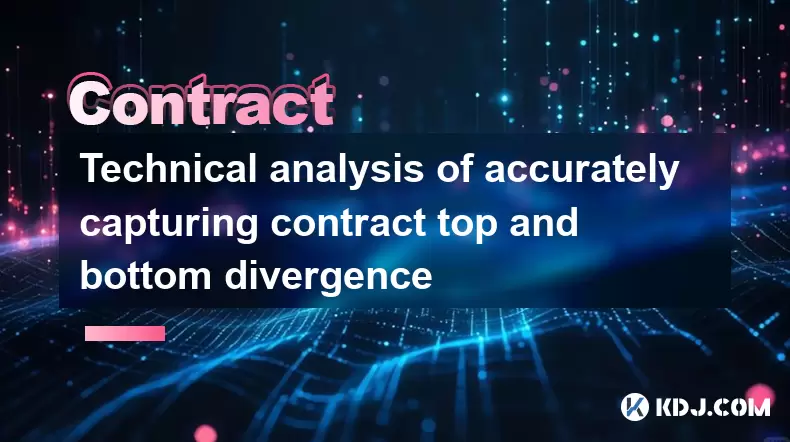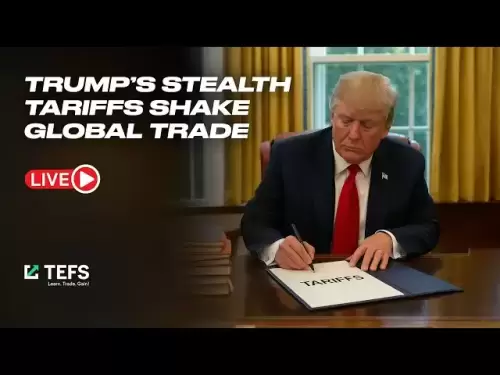-
 Bitcoin
Bitcoin $115200
-2.68% -
 Ethereum
Ethereum $3601
-5.16% -
 XRP
XRP $3.035
-2.96% -
 Tether USDt
Tether USDt $0.9997
-0.04% -
 BNB
BNB $764.5
-5.43% -
 Solana
Solana $168.1
-5.92% -
 USDC
USDC $0.9998
-0.02% -
 Dogecoin
Dogecoin $0.2090
-4.80% -
 TRON
TRON $0.3272
-0.49% -
 Cardano
Cardano $0.7306
-5.00% -
 Hyperliquid
Hyperliquid $39.16
-12.22% -
 Stellar
Stellar $0.3967
-4.96% -
 Sui
Sui $3.566
-5.95% -
 Chainlink
Chainlink $16.55
-6.57% -
 Bitcoin Cash
Bitcoin Cash $552.3
-3.90% -
 Hedera
Hedera $0.2516
-4.69% -
 Avalanche
Avalanche $21.99
-5.75% -
 Toncoin
Toncoin $3.621
-0.28% -
 Ethena USDe
Ethena USDe $1.000
-0.03% -
 UNUS SED LEO
UNUS SED LEO $8.951
0.02% -
 Litecoin
Litecoin $105.9
-3.59% -
 Shiba Inu
Shiba Inu $0.00001232
-5.00% -
 Polkadot
Polkadot $3.640
-5.55% -
 Uniswap
Uniswap $9.048
-7.03% -
 Monero
Monero $301.8
-1.51% -
 Dai
Dai $0.9999
-0.01% -
 Bitget Token
Bitget Token $4.334
-3.66% -
 Pepe
Pepe $0.00001064
-6.17% -
 Cronos
Cronos $0.1367
-5.78% -
 Aave
Aave $259.2
-4.59%
Technical analysis of accurately capturing contract top and bottom divergence
Divergence in crypto trading signals potential reversals; traders use RSI and MACD to spot top and bottom divergences, aiding in capturing market peaks and troughs.
Jun 10, 2025 at 01:56 pm

Technical analysis plays a crucial role in the cryptocurrency market, particularly when it comes to identifying top and bottom divergences in contract prices. Divergence refers to a situation where the price of an asset moves in the opposite direction of a technical indicator, such as the Relative Strength Index (RSI) or Moving Average Convergence Divergence (MACD). This phenomenon can signal potential reversals in the market, making it a valuable tool for traders looking to capture the peaks and troughs of price movements.
Understanding Divergence in Cryptocurrency Trading
Divergence in the context of cryptocurrency trading is a critical concept for traders aiming to predict market turns. There are two main types of divergence: bullish divergence and bearish divergence. Bullish divergence occurs when the price of a cryptocurrency forms a lower low, but the indicator forms a higher low. This suggests that the downward momentum is weakening, and a reversal to the upside might be imminent. Conversely, bearish divergence happens when the price sets a higher high, but the indicator shows a lower high, indicating weakening upward momentum and a possible downward reversal.
Identifying Top and Bottom Divergences
To accurately capture top and bottom divergences, traders need to be vigilant in monitoring both the price action and the corresponding indicators. For a top divergence, traders should look for a situation where the price of a cryptocurrency reaches a new high, but the indicator fails to reach a new high and instead forms a lower high. This can be a signal that the current uptrend is losing steam and a reversal might be on the horizon. Similarly, for a bottom divergence, traders should observe a scenario where the price hits a new low, but the indicator forms a higher low, suggesting that the downtrend might be running out of steam.
Tools and Indicators for Detecting Divergence
Several tools and indicators are commonly used to detect divergence in the cryptocurrency market. The Relative Strength Index (RSI) is a popular momentum oscillator that measures the speed and change of price movements. Traders often use RSI to identify overbought and oversold conditions, which can be helpful in spotting potential divergences. Another widely used indicator is the Moving Average Convergence Divergence (MACD), which helps traders understand the relationship between two moving averages of a cryptocurrency's price. By analyzing the MACD line and the signal line, traders can identify bullish and bearish divergences.
Practical Steps to Identify Divergence
To effectively identify divergence in the cryptocurrency market, traders can follow these steps:
- Choose the Right Indicator: Decide which indicator to use based on your trading strategy. Common choices include RSI and MACD.
- Monitor Price and Indicator Movements: Keep a close eye on both the price chart and the chosen indicator. Look for discrepancies between the two.
- Identify Potential Divergences: Look for instances where the price forms a new high or low, but the indicator does not follow suit. This could be a sign of divergence.
- Confirm the Divergence: Use additional technical analysis tools, such as trendlines or support and resistance levels, to confirm the divergence signal.
- Act on the Signal: Once a divergence is confirmed, consider entering a trade in the direction suggested by the divergence.
Case Study: Identifying a Bottom Divergence in Bitcoin
To illustrate the process of identifying a bottom divergence, let's consider a hypothetical scenario involving Bitcoin. Suppose Bitcoin's price has been in a downtrend, reaching a new low at $30,000. However, the RSI, which typically ranges from 0 to 100, forms a higher low at 35 during this period. This discrepancy between the price and the RSI could indicate a bullish bottom divergence. To confirm this divergence, a trader might draw a trendline on the RSI to highlight the higher low and compare it to the price chart. If the divergence is confirmed, the trader might consider entering a long position, anticipating a potential reversal in Bitcoin's price.
Challenges and Considerations in Divergence Trading
While divergence can be a powerful tool for predicting market reversals, it is not without its challenges. False signals are a common issue, where a divergence appears to be forming but does not lead to the expected price movement. To mitigate this risk, traders should use additional technical analysis tools to confirm divergence signals. Moreover, market volatility can make it difficult to accurately identify divergences, as rapid price movements can lead to misleading signals. Traders should be aware of these challenges and use divergence as part of a broader trading strategy.
Frequently Asked Questions
Q: Can divergence be used in all timeframes for cryptocurrency trading?
A: Yes, divergence can be applied to various timeframes, from short-term intraday charts to longer-term weekly or monthly charts. However, the reliability of divergence signals may vary depending on the timeframe, with longer timeframes often providing more robust signals.
Q: Are there other indicators besides RSI and MACD that can be used to identify divergence?
A: Yes, other indicators that can be used to identify divergence include the Stochastic Oscillator, the Commodity Channel Index (CCI), and the On-Balance Volume (OBV). Each of these indicators has its own strengths and can be used to complement RSI and MACD in identifying potential divergences.
Q: How can traders differentiate between a genuine divergence and a false signal?
A: To differentiate between genuine and false divergence signals, traders should look for confirmation from other technical analysis tools, such as trendlines, support and resistance levels, and additional indicators. A divergence signal that is confirmed by multiple tools is more likely to be genuine.
Q: Is it necessary to use multiple indicators to confirm divergence, or can a single indicator be sufficient?
A: While a single indicator can sometimes provide a clear divergence signal, using multiple indicators can help increase the reliability of the signal. By cross-referencing signals from different indicators, traders can reduce the risk of false signals and make more informed trading decisions.
Disclaimer:info@kdj.com
The information provided is not trading advice. kdj.com does not assume any responsibility for any investments made based on the information provided in this article. Cryptocurrencies are highly volatile and it is highly recommended that you invest with caution after thorough research!
If you believe that the content used on this website infringes your copyright, please contact us immediately (info@kdj.com) and we will delete it promptly.
- FTX Token's Wild Ride: FTT Drop Amidst Creditor Repayment Buzz
- 2025-08-02 01:30:12
- Navigating the Crypto Market: Bitcoin, Trader Experience, and Avoiding the Noise
- 2025-08-02 00:50:12
- Deep Agents, AI Task Management, and Evolution AI: A New Era?
- 2025-08-02 00:50:12
- SPX6900, BlockDAG, and Miner Sales: A New York Minute on Crypto Trends
- 2025-08-01 23:30:15
- BlackRock, XRP ETF, and Ripple: Is the Perfect Storm Brewing?
- 2025-08-01 22:50:11
- Solana ETF Momentum Builds: Will SOL Join the Institutional Party?
- 2025-08-02 00:10:15
Related knowledge

Why is my Bitstamp futures position being liquidated?
Jul 23,2025 at 11:08am
Understanding Futures Liquidation on BitstampFutures trading on Bitstamp involves borrowing funds to open leveraged positions, which amplifies both po...

How to report Bitstamp futures for taxes?
Jul 30,2025 at 08:35am
Understanding Bitstamp Futures and Taxable EventsWhen trading Bitstamp futures, it’s essential to recognize that these financial instruments are treat...

Does Bitstamp offer inverse contracts?
Jul 23,2025 at 01:28pm
Understanding Inverse Contracts in Cryptocurrency TradingIn the realm of cryptocurrency derivatives, inverse contracts are a specific type of futures ...

What is the difference between futures and perpetuals on Bitstamp?
Jul 27,2025 at 05:08am
Understanding Futures Contracts on BitstampFutures contracts on Bitstamp are financial derivatives that allow traders to speculate on the future price...

How to find your Bitstamp futures trade history?
Jul 23,2025 at 08:07am
Understanding Bitstamp and Futures Trading AvailabilityAs of the current state of Bitstamp’s service offerings, it is critical to clarify that Bitstam...

Can I use a trailing stop on Bitstamp futures?
Jul 23,2025 at 01:42pm
Understanding Trailing Stops in Cryptocurrency TradingA trailing stop is a dynamic type of stop-loss order that adjusts automatically as the price of ...

Why is my Bitstamp futures position being liquidated?
Jul 23,2025 at 11:08am
Understanding Futures Liquidation on BitstampFutures trading on Bitstamp involves borrowing funds to open leveraged positions, which amplifies both po...

How to report Bitstamp futures for taxes?
Jul 30,2025 at 08:35am
Understanding Bitstamp Futures and Taxable EventsWhen trading Bitstamp futures, it’s essential to recognize that these financial instruments are treat...

Does Bitstamp offer inverse contracts?
Jul 23,2025 at 01:28pm
Understanding Inverse Contracts in Cryptocurrency TradingIn the realm of cryptocurrency derivatives, inverse contracts are a specific type of futures ...

What is the difference between futures and perpetuals on Bitstamp?
Jul 27,2025 at 05:08am
Understanding Futures Contracts on BitstampFutures contracts on Bitstamp are financial derivatives that allow traders to speculate on the future price...

How to find your Bitstamp futures trade history?
Jul 23,2025 at 08:07am
Understanding Bitstamp and Futures Trading AvailabilityAs of the current state of Bitstamp’s service offerings, it is critical to clarify that Bitstam...

Can I use a trailing stop on Bitstamp futures?
Jul 23,2025 at 01:42pm
Understanding Trailing Stops in Cryptocurrency TradingA trailing stop is a dynamic type of stop-loss order that adjusts automatically as the price of ...
See all articles

























































































